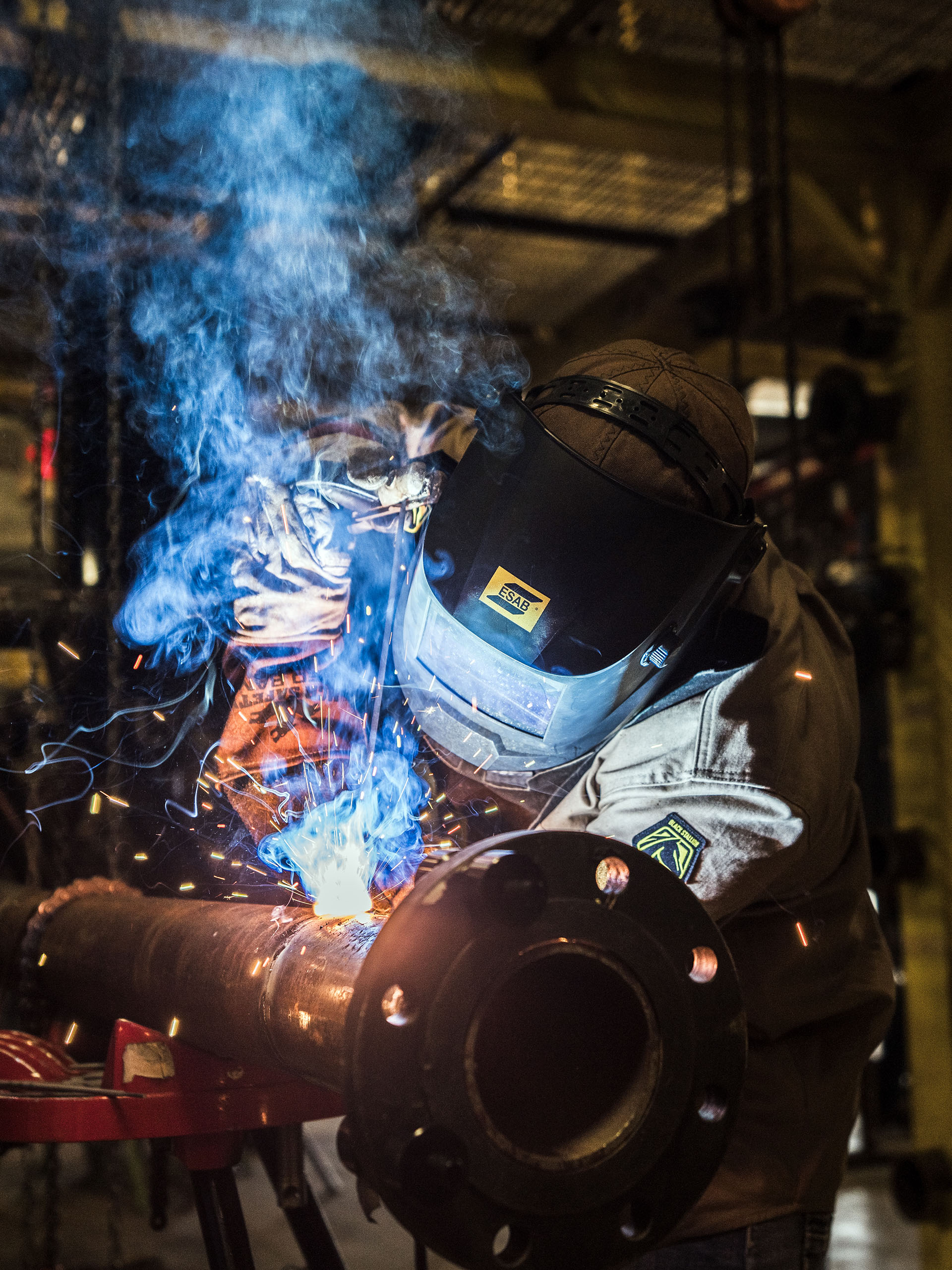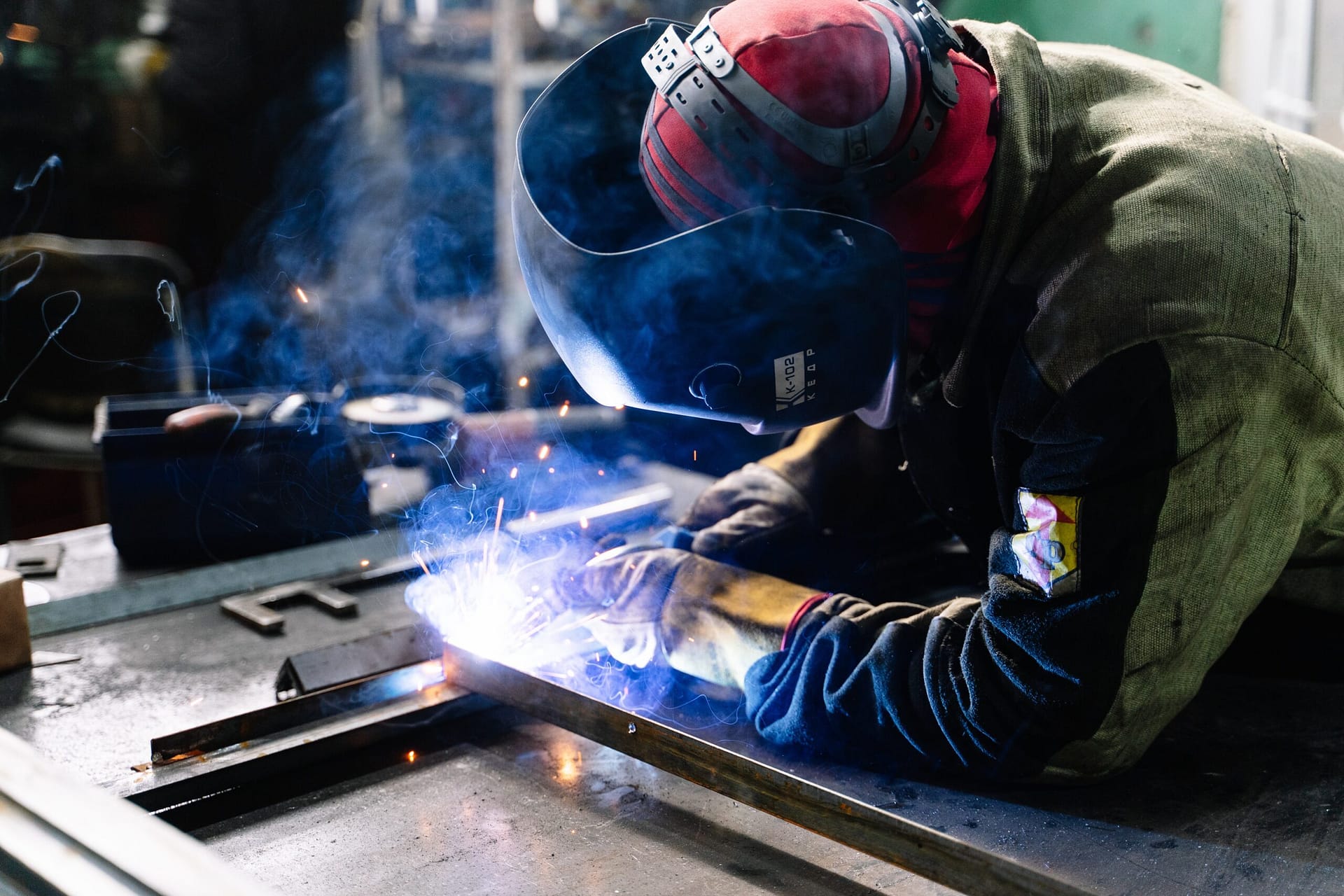Common Welding Repair Service Issues and How to Address Them Properly
Welding repair work typically come across a variety of problems that can jeopardize the stability of the last item. Common problems include poor infiltration, porosity, and misalignment, to name a few. Each issue offers distinct difficulties that require details strategies for resolution. Understanding these problems is necessary for welders intending to enhance their results and skills. This discussion will certainly discover these typical welding repair service concerns and reliable techniques to address them.
Poor Infiltration
Insufficient infiltration occurs when the weld steel falls short to totally fuse with the base material, causing weak joints and potential structural failures. This concern commonly comes from not enough warm input, inaccurate electrode angle, or incorrect welding rate. Welders might encounter inadequate penetration due to a mistake of the needed specifications for a particular product thickness or type. Additionally, contamination on the base material's surface can hinder reliable bonding, worsening the issue. To deal with inadequate penetration, welders should ensure appropriate settings on their devices and keep a clean job surface area. Regular inspection of welds is recommended to determine any kind of shortages early, enabling timely corrections and the prevention of compromised architectural honesty in bonded assemblies.
Porosity
Porosity is a typical flaw in bonded joints that materializes as small gas bubbles caught within the weld metal. This flaw can compromise the honesty of the weld, causing lowered toughness and prospective failure under anxiety. Belgrade. Porosity usually arises from contamination, wetness, or improper welding techniques, which allow gases to get away right into the molten weld swimming pool. To deal with porosity, welders need to assure appropriate surface area preparation, maintain a tidy working atmosphere, and utilize appropriate welding specifications. Additionally, choosing the best filler material and shielding gas can mitigate gas entrapment. Routine evaluation and screening of welds can assist identify porosity early, assuring prompt restorative actions are taken, thereby preserving the quality and reliability of the welded structure
Imbalance
Misalignment in welding can arise from numerous factors, consisting of inappropriate setup and thermal development. Recognizing the origin is crucial for reliable resolution. Several adjustment strategies are available to straighten components and assure structural stability.
Root causes of Imbalance
Welding imbalance frequently comes from a selection of underlying issues that can jeopardize structural honesty. One key reason is improper fit-up of parts before welding, which can cause voids and unequal surfaces. Variations in thermal growth throughout the welding process can additionally lead to distortion, specifically if the materials being joined have different coefficients of expansion. Furthermore, poor fixturing and clamping might fail to hold parts firmly in position, leading to motion during welding. Badly conserved tools, including welding equipments and tools, might introduce inconsistencies in the weld bead, further contributing to misalignment. Ultimately, driver error, stemming from not enough training or experience, can likewise play a substantial duty in creating misaligned welds.
Modification Methods Offered
Attending to imbalance effectively calls for a mix of restorative strategies tailored to the particular concerns handy. One common approach is using fixtures or jigs to hold elements in the right position during welding, ensuring consistent positioning. Furthermore, preheating the products can help in reducing distortion and boost fit-up. For considerable imbalance, mechanical adjustment techniques, such as utilizing hydraulic jacks or clamps, can be utilized to fix the setting before welding. Post-weld warmth treatment may also be needed to ease anxieties brought on by misalignment. Ultimately, cautious evaluation and change throughout the configuration phase can protect against imbalance problems from coming to be significant issues, promoting a smoother welding process and boosting overall structural stability.
Distortion
Distortion is an usual difficulty in welding that can emerge from various aspects, including unequal heating & cooling. Comprehending the reasons for distortion is vital for applying reliable avoidance strategies. Addressing this concern not just boosts structural integrity however also enhances the overall high quality of the weld.
Causes of Distortion
When subjected to the extreme warmth of welding, materials typically undertake changes that can result in distortion. This phenomenon mostly emerges from thermal growth and tightening during the welding process. As the weld location warms up, the material increases; upon cooling, it acquires, which can produce inner anxieties. On top of that, unequal heating throughout a work surface can worsen these tensions, leading to bending or flexing. The sort of material also plays a considerable function; metals with differing thermal conductivity and coefficients of expansion may react differently, resulting in uncertain distortions. Furthermore, inadequate joint style and poor fixturing can contribute to imbalance during welding, boosting the probability of distortion. Understanding these reasons is essential for efficient welding repair and avoidance methods.
Prevention Techniques
Effective avoidance techniques for distortion throughout welding concentrate on regulating warm input and making certain proper joint design. Maintaining a constant heat input assists to decrease thermal expansion and contraction, which can bring about distortion. Using strategies such as pre-heating the work surface can also reduce the temperature gradient, advertising consistent home heating. Additionally, selecting proper joint layouts, such as T-joints or lap joints, can enhance security and reduce tension focus. Executing proper fixturing to protect the work surfaces in place further help in preserving alignment during the welding procedure. Finally, staggered welding series can disperse warmth much more equally, stopping local distortion. By applying these you can try here approaches, welders can greatly decrease the likelihood of distortion and boost the overall quality of their welds.
Fracturing
Splitting is an usual concern encountered in welding fixings, commonly arising from numerous factors such as inappropriate cooling rates, material selection, or insufficient joint preparation. The incident of cracks can significantly compromise the stability of the weld, resulting in potential failures throughout procedure. To resolve this problem, welders must initially examine the origin, ensuring that products are suitable and suitably picked for the certain application. In addition, regulating the air conditioning rate during the welding process is vital; quick air conditioning can cause stress and anxiety and bring about splitting. Correct joint style and preparation also contribute to decreasing the danger. Carrying out these strategies can enhance weld high quality and resilience, inevitably minimizing the chance of breaking in completed weldments.

Incomplete Blend
A considerable issue in welding repair work is insufficient fusion, which occurs when the weld steel does not sufficiently bond with the base material or previous weld passes - Montana Mobile Welding and Repair Welding. This flaw can cause weaknesses in the joint, possibly compromising the integrity of the bonded structure. Elements adding to insufficient combination consist of inadequate warm input, inappropriate welding method, and contamination of the surface areas being signed up with. To resolve this concern successfully, welders must guarantee correct pre-weld cleansing and surface area prep work, as well as adjust their welding criteria to accomplish ample infiltration and fusion. Regular look at this now assessment throughout the welding process can also aid recognize insufficient fusion early, enabling timely rehabilitative procedures to boost the general quality of the weld
Overheating
While welding repair services can boost architectural integrity, overheating presents a substantial challenge that can result in product degradation. Too much warmth during welding can change the mechanical residential properties of metals, leading to decreased stamina, increased brittleness, and bending. This sensation is specifically crucial in high-stress applications where architectural integrity is extremely important. Recognizing getting too hot can entail visual assessments for staining or distortion, in addition to keeping an eye on temperature throughout the welding procedure. To alleviate the threats connected with getting too hot, welders ought to use ideal techniques, such as regulating warm input, adjusting traveling rate, and making use of suitable filler products. In addition, executing pre- and post-weld heat treatments can assist bring back product properties and enhance the total top quality of the fixing, making certain long-lasting performance and security.
Regularly Asked Concerns
What Are the Typical Indicators of a Welding Defect?

How Can I Examine My Welds for Quality?
To test welds for high quality, one can use aesthetic assessments, ultrasonic testing, and radiographic techniques. Each method assures architectural honesty, identifies flaws, and verifies adherence to defined standards, ultimately enhancing the great post to read dependability of the welded joints.
What Safety Precautions Should I Take While Welding?
When welding, one need to prioritize safety and security by wearing proper personal safety tools, making certain proper air flow, protecting combustible materials away, keeping a clean work area, and recognizing surroundings to stop injuries and mishaps.
Can I Repair a Weld Without Renovating the Entire Joint?
Repairing a weld without redoing the whole joint is possible, depending on the damages (Fabrication). Methods such as grinding, including filler material, or utilizing a welding process can effectively deal with particular flaws while preserving the bordering framework
What Tools Are Vital for Efficient Welding Fixes?
Crucial tools for effective welding repair services include a welding machine, cord brush, grinder, safety gear, clamps, and filler products. Each tool plays an essential role in guaranteeing quality and safety and security during the repair service process. Porosity normally develops from contamination, moisture, or incorrect welding methods, which allow gases to leave into the liquified weld pool. Improperly conserved devices, including welding machines and tools, may introduce variances in the weld bead, further adding to imbalance. When subjected to the extreme warm of welding, products typically undertake changes that can lead to distortion. Fracturing is an usual problem come across in welding fixings, frequently resulting from different aspects such as inappropriate cooling prices, material choice, or poor joint prep work. A substantial concern in welding repair services is insufficient combination, which takes place when the weld steel does not adequately bond with the base product or previous weld passes.